Every March, I scratch my head to recognize Asian American and Pacific Islanders in children’s books for Women’s History Month. Here’s my (too short) list. Who am I missing?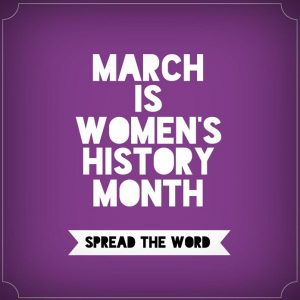
These AAPI women are notable but don’t have picture books yet…
- Amy Tan, author
- Tokyo Rose, radio personality
- Yoko Ono, artist
- Margaret Cho, actress, comedian
- Sandra Oh, actress
- Michelle Wie, golfer
- Jhumpa Lahiri, actor
- Mindy Kaling, actor, writer
- Mazie Hirono, US Rep
- Ming Na Wen, actress
- Constance Wu, actress
- Michelle Kwan, ice skater
- Kristy Yamaguchi, ice skater
- Ann Curry, TV news anchor
- Sugar Pie DeSanto, blues singer
- Patsy Takemoto Mink, US Rep, co-authored the Title IX Amendment of the Higher Education Amendment
- Yuri Kochiyama, activist
- Aiko Herzig-Yoshinaga, activist
- Michi Nishiura Weglyn, activist
- Aki Kurose, activist
- Cherry Kinoshita, activist
Good call Linda B:
- Grace Lin
- Grace Lee Boggs
Celebrating Asian Americans & Pacific Islanders for Women’s History Month
Queen Liliuokalani: Born September 2, 1838
Liliuokalani: The Last Queen of Hawaii by John MacGregor, illustrated by Pamela Johnson
Learn about the history of Hawaii and how it was taken over by the United States. [nonfiction, ages 8 and up]
Gyo Fujikawa: Born November 3, 1908
It Began with a Page: How Gyo Fujikawa Drew the Way by Kyo Maclear, illustrated by Julie Morstad
Growing up in California, Gyo Fujikawa always knew that she wanted to be an artist. She was raised among strong women, including her mother and teachers, who encouraged her to fight for what she believed in. During World War II, Gyo’s family was forced to abandon everything and was taken to an internment camp in Arkansas.
Far away from home, Gyo worked as an illustrator in New York while her innocent family was imprisoned. Seeing the diversity around her and feeling pangs from her own childhood, Gyo became determined to show all types of children in the pages of her books. There had to be a world where they saw themselves represented. [picture book biography, ages 4 and up]
Anna May Wong: Born January 3, 1905
She’s Chinese American.
Shining Star: The Anna May Wong Story by Paula Woo, illustrated by Lin Wang
Anna May Wong was the first Chinese American movie star, and the first Asian American actress to gain international recognition. Despite facing racism in 1920s Hollywood, her career was long and varied and included silent and sound film, television, stage, and radio.
She rose from humble beginnings growing up in Los Angeles’ Chinatown where her family ran a laundry business. Breaking into Hollywood was especially tough for an Asian American woman, and she took what little roles were offered to her to get started including those that included yellowface and Anti-Asian stereotyping. In 1929, her role as a dancer in Picadilly made her a star in Europe. She vowed never to take roles that demeaned Asians again, even if it meant limited work opportunities. [picture book, ages 8 and up]
Chien-Shiung Wu: Born May 31, 1912
Queen of Physics: How Wu Chien Shiung Helped Unlock the Secrets of the Atom by Teresa Robeson, illustrated by Rebecca Huang
When Wu Chien Shiung was born in China 100 years ago, most girls did not attend school; no one considered them as smart as boys. But her parents felt differently. Giving her a name meaning “Courageous Hero,” they encouraged her love of learning and science. This engaging biography follows Wu Chien Shiung as she battles sexism and racism to become what Newsweek magazine called the “Queen of Physics” for her work on beta decay. Along the way, she earned the admiration of famous scientists like Enrico Fermi and Robert Oppenheimer and became the first woman hired as an instructor by Princeton University, the first woman elected President of the American Physical Society, the first scientist to have an asteroid named after her when she was still alive, and many other honors. [picture book biography, ages 5 and up]
Hazel Ying Lee: Born August 24, 1912
The Fearless Flights of Hazel Ying Lee by Julie Leung, illustrated by Julie Kwon
“No one could see her eyes, hair, or skin color when Hazel was thousands of feet above. Up here, people were just tiny specks against a vast land. And inside her cockpit, Hazel felt like a dragon chasing down the sun. She leaned into the wind, pushing her plane to go faster. She looked at the horizon, and willed the world to move forward.”
During a time of rampant racial discrimination, Hazel, nevertheless, achieved what seemed impossible. Hazel Ying Lee was the first Chinese American woman to fly for the U.S. military. She joined the Women’s Airforce Service Pilots during WWII, testing planes after they came off the assembly line to discover manufacturing defects. It was dangerous work but it allowed her to do what she loved most, fly! [picture book biography, ages 4 and up]
Joyce Chen: Born September 14, 1917
Dumpling Dreams: How Joyce Chen Brought the Dumpling from Beijing to Cambridge by Carrie Clickard, illustrated by Katy Wu
When I was in college in the 1980s, I remember seeing her restaurant on Mass. Ave in Cambridge near MIT. I never ate there because my friends, Denley who grew up in NYC’s Chinatown, John who grew up in Queens, viewed her restaurant as inauthentic. I grew up eating Chinese food in Los Angeles’ Chinatown.
In rhyming text, this is the story of the first celebrity Asian American chef, Joyce Chen. Her TV show, Joyce Chen Cooks, won a Reader’s Digest educational television award, but only lasted one season.
The picture book covers her name change from her given name “Liao Jia-ai” to “Joyce.”
“Let’s call her Joyce,”
the teachers say.
She likes the name.
“Jia” is gone
and she is Joyce from that day on.
I wish there was more clarification about the name change. Was she at an American school? It seems like her teacher is Chinese. Why would she switch to an Anglicized version of her name, particularly if she was still living in China? I personally don’t like the message that her Chinese name somehow wasn’t good enough and needed to be changed. And I also wonder if her parents called her Joyce at home and if she used the English alphabet to spell her name while living in China versus the actual Chinese characters of her given name.
Chinese parents choose their children’s names very carefully around the meaning of the name for both the sound and the character. If you didn’t know, Mandarin has four pronunciations for each sound so there can be four different characters that mean completely different things for one sound. A good example is the sound “ma”, mā; má; mǎ; mà.
妈 (mā) first tone, meaning “mom”
麻 (má) second tone, meaning “numb”
马 (mǎ) third tone, meaning “horse”
骂 (mà) fourth tone, meaning “to curse”
Related post: Children’s Books About the Importance of One’s Name
I also wish that other issues of her background were covered. Was she supposed to be in the kitchen with Cook? As a child of privilege, was she supposed to be in the kitchen learning how to cook? Likewise with education. Was it unusual for a girl to get a formal education in China in the 1920s or was her father unusual for that time?
Finally, I wanted to note that Buckingham School where Joyce Chen participated in the bake sale is an elite private school in Cambridge. I think it’s safe to say that she introduced Chinese food to wealthy white people who didn’t venture into Boston’s Chinatown, but I think it’s safe to say that dumplings were sold in the various Chinatown restaurants across America as part of Dim Sum and tea culture long before Joyce Chen immigrated to America. For example, Hang An, a dim sum restaurant in San Franciso is over 100 years old.
I would give Joyce Chen credit as the first person of color to be on television hosting a cooking show. Also, an American icon in food and the first Asian American chef to be featured on a commemorative stamp. I would even say that she’s the first Chinese restauranteur to bring Chinese food to the American masses as sophisticated rather than working-class food. [picture book, ages 4 and up]
Eugenia Clark: Born May 4, 1922
She’s half Japanese American.
Swimming with Sharks: The Daring Discoveries of Eugenie Clark by Heather Lang, illustrated by Jordi Solano
In the 1930s, few people studied the ocean and none were women. At 9 years old, Eugenie Clark dreamed of studying sharks and went on to get a master’s degree in zoology. She became the first person to study sharks in their natural habitat. Her research shed new light on sharks; they were intelligent creatures, not voracious killers. She experienced discrimination as a woman and racism as a Japanese American, but she never let it slow her down. She passed away in 2015 at the age of 92, still researching and diving into the depths of the ocean! [picture book biography, ages 5 and up]
Shark Lady: The True Story of How Eugenie Clark Became the Ocean’s Most Fearless Scientist by Jess Keating, illustrated by
Eugenie Clark fell in love with sharks from the first moment she saw them at the aquarium. She couldn’t imagine anything more exciting than studying these graceful creatures. But Eugenie quickly discovered that many people believed sharks to be ugly and scary―and they didn’t think women should be scientists. [picture book biography, ages 4 and up]
Maggie Gee: Born August 5, 1923
She’s Chinese American
Sky High: The True Story of Maggie Gee by Marissa Moss
Maggie dreamed of flying–just like her favorite pilot, Amelia Earhart. She told her brothers and sisters stories of flying across oceans and deserts, and all around the world. But in the 1920s and 1930s, few girls took to the sky.
Then, when Maggie grew up, her whole world changed overnight: the United States entered World War II, and everyone in her family was affected. Maggie knew that this was the time to support her country–and it was her chance to fly. Young Maggie Gee became one of only two Chinese American Women Airforce Service Pilots to serve in WWII.
Based on the true adventures of a girl not bound by gravity, Marissa Moss’s stirring story and Carl Angel’s brilliant illustrations depict what determination, bravery, and boundless possibilities look like when dreams are allowed to soar sky-high. [picture book, ages 4 and up]
Ruth Asawa: January 24, 1926
A Life Made by Hand: The Story of Ruth Asawa by Andrea D’Aquino
Sculpture is like farming. If you just keep at it, you can get a lot done.
Ruth Asawa
It makes me so happy that Ruth Asawa is finally getting the attention that she deserves. Her wire sculptures look like delicate, floating objects, but that belies the strength of the structures. And that also describes Ruth Asawa; she was someone who created beauty out of nothing and found inspiration even in the worst circumstances. Had she not been female and Japanese American, it’s possible that the world would have known her sooner like her fellow college alumni: Merce Cunningham, Buckminister Fuller, and Josef Albers. But it’s never too late to celebrate her groundbreaking work! [picture book, ages 5 and up]
Cynthia Kadohata: Born July 2, 1956
Cynthia Kadohata by Jill C. Wheeler
This biography introduces readers to Cynthia Kadohata, the Newbery Medal-winning author of Kira-Kira. She is also the author of A Million Shades of Gray, Outside Beauty, Weedflower, Cracker! The Best Dog in Vietnam, and other young adult and adult novels. Readers will learn about Kadohata’s early life in the South, the influence of her Japanese heritage, her struggle to get short stories published in magazines, her switch to young adult fiction, and the inspiration for her award-winning books. [picture book biography, ages 8 and up]
Maya Lin: Artist-Architect of Light and Lines by Jeanne Walker Harvey, illustrated by Dow Phumiruk
I’m excited to read this picture book biography. I have long admired Maya Lin’s public art monuments and it’s wonderful to see her in a children’s book. I’ll also happy that Dow Phumiruk is the illustrator; I loved her #KidLitSafetyPin artwork.
As a child, Maya Lin loved to study the spaces around her. She explored the forest in her backyard, observing woodland creatures, and used her house as a model to build tiny towns out of paper and scraps. The daughter of a clay artist and a poet, Maya grew up with art and learned to think with her hands as well as her mind. From her first experiments with light and lines to the height of her success nationwide, this is the story of an inspiring American artist: the visionary artist-architect who designed the Vietnam Veterans Memorial. [picture book biography, ages 4 and up]
Kamala Harris: October 20, 1964
Kamala Harris: Rooted in Justice by Nikki Grimes, illustrated by Laura Freeman
Told in Nikki Grimes’s stunning verse and featuring gorgeous illustrations by Laura Freeman, this picture book biography brings to life a story that shows all young people that the American dream can belong to all of us if we fight for one another. [picture book biography, ages 4 and up]
Who is Kamala Harris? by Kirsten Anderson
On November 7, 2020, Kamala Harris, a senator from California, became the first woman and the first African-American and South Asian-American person to be elected to the vice presidency. While her nomination for this position was not unexpected, her rise to national prominence was one filled with unexpected turns and obstacles. After failing her first bar exam to become a lawyer, she tried again and passed. From there, she quickly rose through the legal ranks, serving as district attorney of San Francisco, then California’s attorney general, and soon, senator. As a politician, Kamala Harris has been a vocal champion of progressive reforms and women’s rights. This exciting story details the defining moments of what led to her nomination and all the monumental ones since that have shaped her career and the future of America. [middle grade biography, ages 8 and up]
My Little Golden Book About Kamala Harris by Rajani LaRocca, illustrated by Ashley Evans
This Little Golden Book about Kamala Harris–the first woman, first African American woman, and first Indian American woman to be elected Vice President of the United States–is an inspiring read-aloud for young girls and boys. [picture book biography, ages 2 and up]
Tammy Duckworth: born March 12, 1968

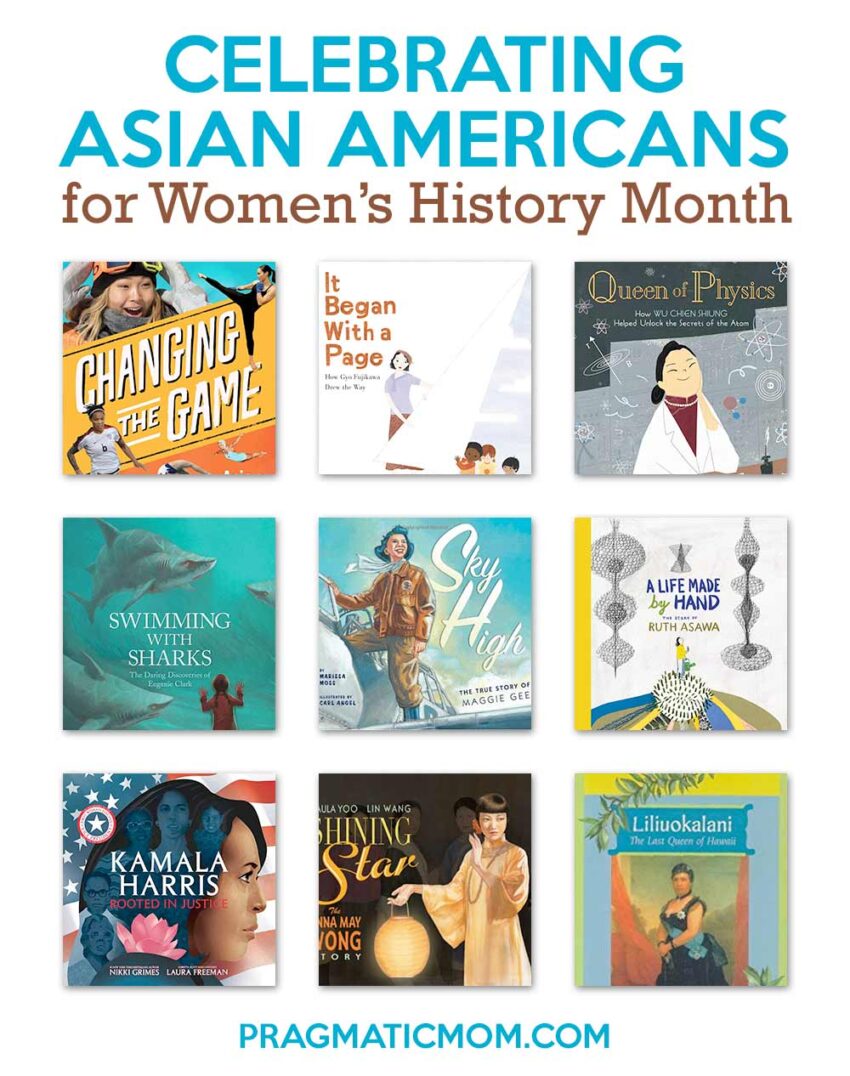
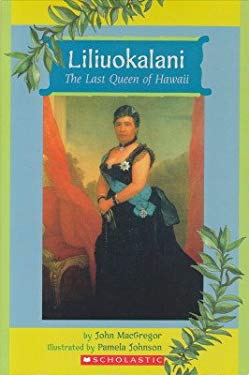
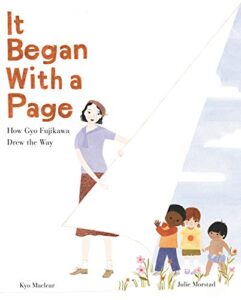
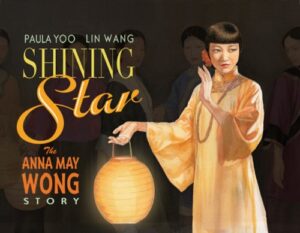
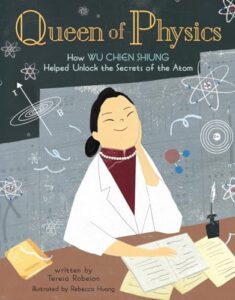
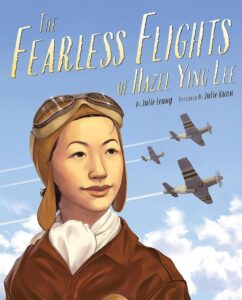
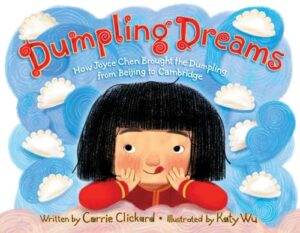
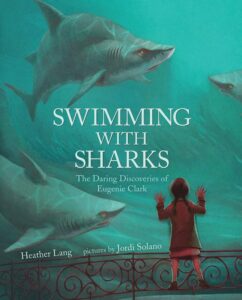
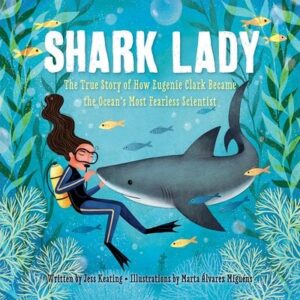
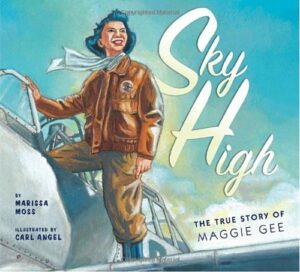
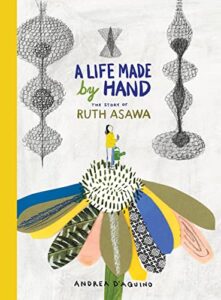
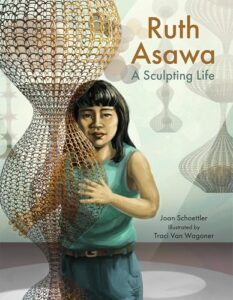
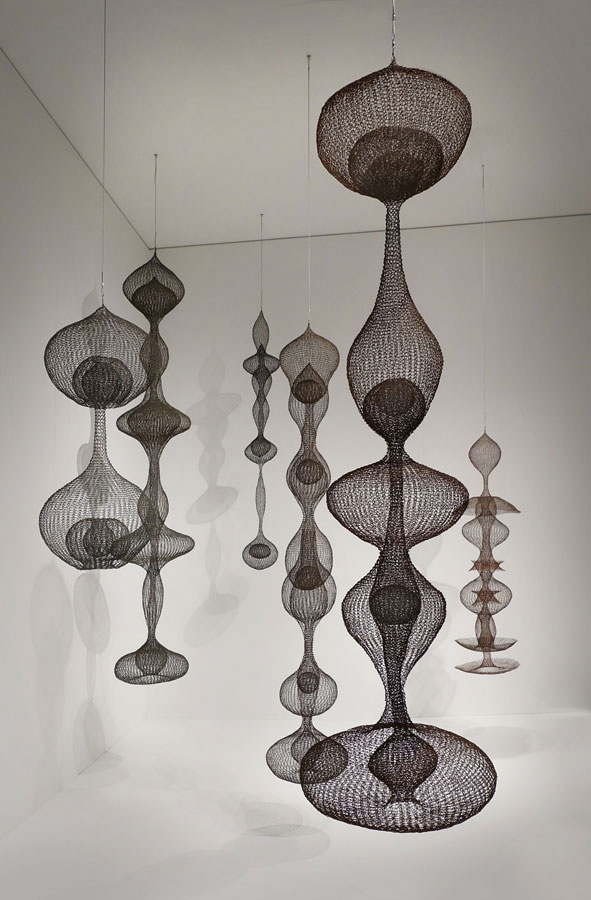
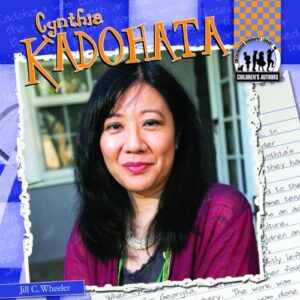
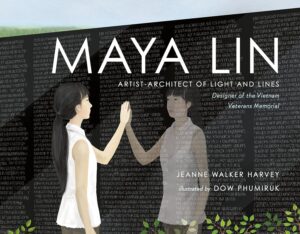
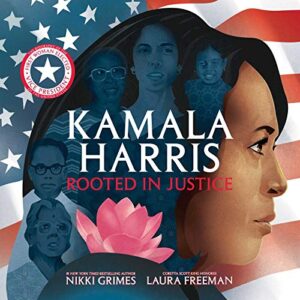
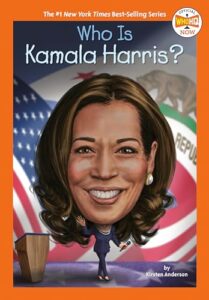
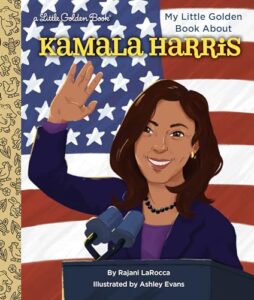
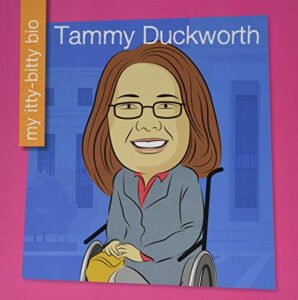
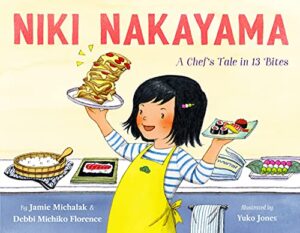
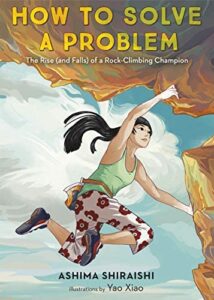
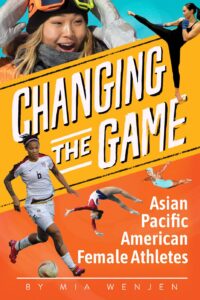
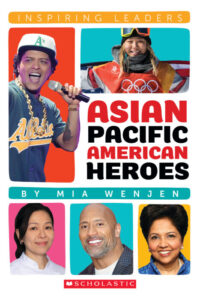
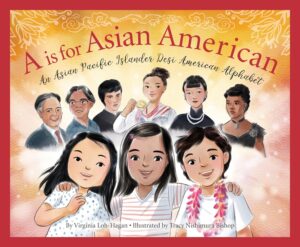
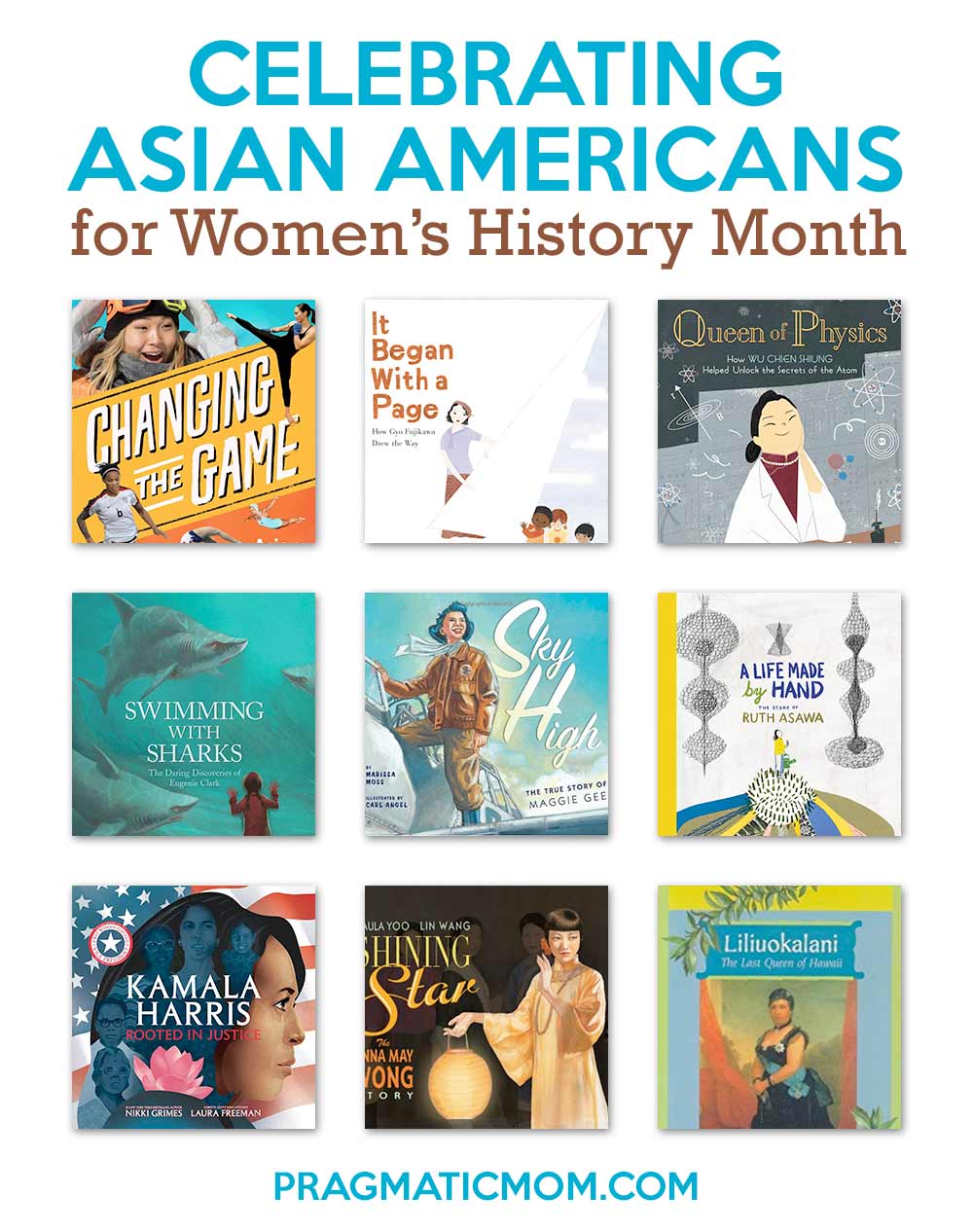
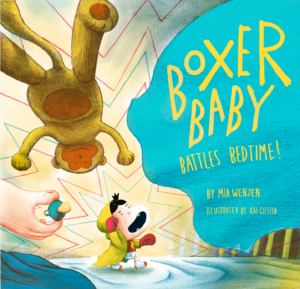
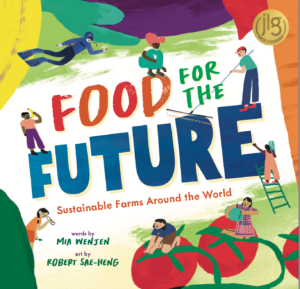
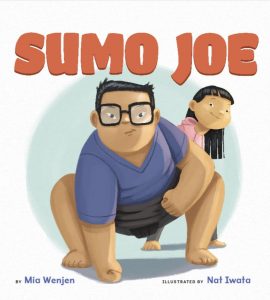
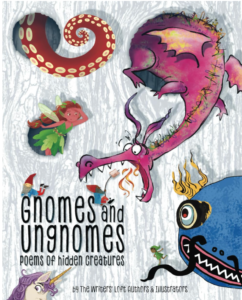
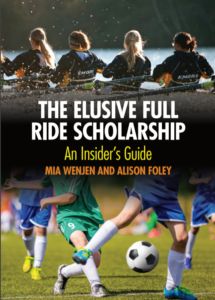
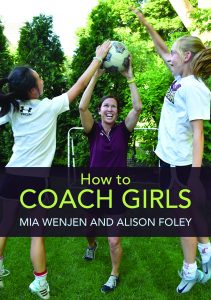
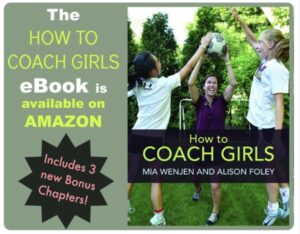

So many great books here, including several I need to read.
Thanks MaryAnne!
Missing Grace Lin and Grace Lee Boggs.
Thanks for adding Linda B!
THANK YOU for this list!! I was noticing how few Asian women were represented in the usual lists of books for Women’s History Month so this resource is perfect! I would love to see a good picture book about Junko Tabei.
First, I love all of your posts! They are always so comprehensive and diverse and I so appreciate all your hard work in gathering these materials.
I’m commenting as a teacher who had this incident: A 4th-grade student of mine (of Laotian heritage) lamented that she never sees representation for Southeast Asian women. She said that Koreans, Japanese, and Chinese woman do deserve recognition, but was hoping to see herself when presented with “Asian American Heritage” materials.
Can you recommend anything? Thank you, again, for all you do!!
Hi Heather,
I should have given you this list first:
Lao and Hmong Children’s Books
https://www.pragmaticmom.com/2017/11/lao-and-hmong-childrens-books/
Sorry about that! I was replying off my phone and could barely see everything.
Here are some lists for Southeast Asians:
South Asian: https://www.pragmaticmom.com/2011/07/top-10-best-east-asian-american-childrens-books-ages-2-14/
Thailand https://www.pragmaticmom.com/2018/04/childrens-books-thailand/
Cambodia https://www.pragmaticmom.com/2016/11/books-for-kids-cambodia/
Vietnam https://www.pragmaticmom.com/2017/11/vietnamese-folk-tales-kids/
India https://www.pragmaticmom.com/2017/11/books-kids-teens-learn-indian-culture-giveaway/
Indian Folktales https://www.pragmaticmom.com/2017/11/seven-amazing-folktales-from-india/
Durga Puja https://www.pragmaticmom.com/2016/09/durga-puja-festivals-india/
Indian Culture https://www.pragmaticmom.com/2015/06/hindi-nursery-rhymes/
Filipino Folk Tales https://www.pragmaticmom.com/2017/10/filippino-folk-tales/
Filipino American https://www.pragmaticmom.com/2017/07/filipino-filipinoamerican-childrens-books/
Myanmar https://www.pragmaticmom.com/2018/03/childrens-books-burma/
Myanmar culture: https://www.pragmaticmom.com/2011/01/teach-me-tuesday-burma/
Hmong and Lao https://www.pragmaticmom.com/2017/11/lao-and-hmong-childrens-books/
Laos: https://www.pragmaticmom.com/2011/05/teach-tuesday-laos/
Books Set in Asia https://www.pragmaticmom.com/2020/03/picture-books-set-in-asia-or-about-asian-americans-giveaway/
Hi Heather,
I should have given you this list first:
Lao and Hmong Children’s Books
https://www.pragmaticmom.com/2017/11/lao-and-hmong-childrens-books/
Sorry about that! I was replying off my phone and could barely see everything.
Warmly,
Mia
I wanted to participate in your contest for your new book, but there isn’t a place for the comment. So I am adding it here! I admire Kristi Yamaguchi. She was a great competitor and I enjoyed following her career. She went on to represent her sport and has achieved a lot of different paths throughout the years including writing children’s books.